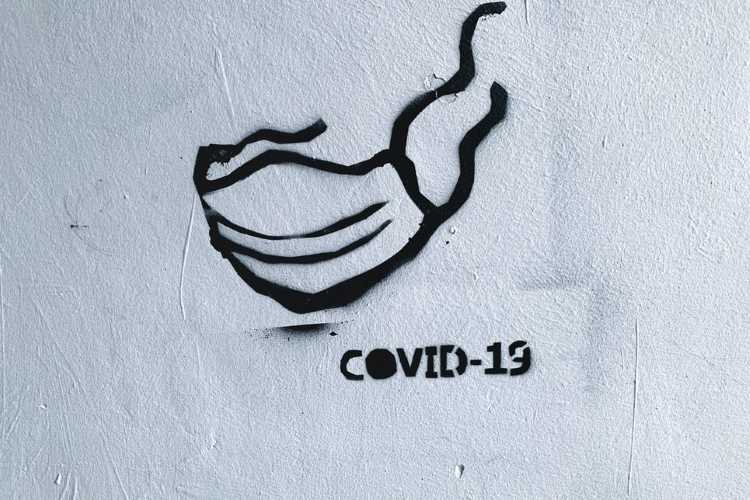
My cousin called me yesterday morning. She was a bit worried. Someone in her neighbourhood tested positive for Covid-19 and she could see the patient’s family members going on with life as usual in the next compound. She was worried if the wind would carry the dreaded virus home, infect all and make hell out of it. Well, hell is not that easy in the real world.
Everything is in an epidemic mood right now. From fear to knowledge to gossip, stuff is spreading everywhere. To me the only thing that didn’t spread well till date is the right information about how Covid-19 spreads.
So, we will just spread some “spreader info” today. Epidemiological data confirms that the most common mode of transmission of coronavirus is through expelled droplets during face-to-face exposure. These include breathing, talking, coughing, or sneezing. Droplets are definitely the most common source for sure here. Droplets are the most common source for sure. Prolonged exposure to an infected person is enough to give you the bug. By this, I mean someone within two meters of distance interacting with you for at least 15 minutes or more.
READ I COVID-19: Need guidelines for using data to combat pandemic
Exposures that are shorter than a minute to individuals who are symptomatic (e.g., coughing, sneezing) are associated with higher risk for transmission. If the patient has symptoms, the time required to infect you is just a minute and it’s more likely to happen. Similar brief exposures to asymptomatic contacts are less likely to result in transmission and will happen only rarely.
Aerosols have been in the eye of a controversy for long, especially with the WHO ignoring it till last week. We saw a change in its stand recently. The virus can be transmitted via aerosols (smaller droplets that hang in air). It is still unclear if this is a significant source of infection in Covid-19 outside an experimental setting. But the chances are definitely there, so take notice.
As of now, such a spread is possible at home and in hospital if the person is in the highly infective state and is staying in a closed space with poor ventilation. Several hospital procedures are a good way to generate aerosols. So one needs to be wary of aerosols too.
READ I Focus on Covid-19 may disrupt India’s anti-malaria programme
You might want to know when a patient has the maximum infectivity. Let me explain this. Viral load in the upper respiratory tract most likely peaks around the time one starts to become symptomatic. The patient will start spreading the bug 2-3 days before he shows symptoms. It may last about 5-7 days after the onset of the symptoms.
Please note that both asymptomatic and pre-symptomatic carriers can transmit SARS-CoV-2. Data from Singapore suggests that transmission can occur in clusters of patients with very close contact (e.g., attending mass, indoor group singing) approximately 24 to 72 hours before the source patient develops symptoms. Just note that if you were in contact with a person who later tests positive, the last three days of that person’s asymptomatic period are also dangerous. If your exposure was within that 72-hour window, just take precautionary quarantine and get yourselves tested if you show symptoms. Before that, you are probably safe.
Several studies from China and Singapore have now confirmed that pre-symptomatic transmission is the most important source of SARS-CoV-2. Approximately half to two thirds of infections happen this way. So, don’t just don’t relax and say that you were in contact with someone who didn’t have any symptoms when you met them. The main damage happens before he/she becomes symptomatic. The worrying thing here is that infected individuals can be infectious before they even realise they are ill. Those innocent souls may even go shopping and to work.
READ I Atmanirbhar Bharat: Reducing dependence on China for pharmaceutical ingredients
Another controversy, again thanks to the WHO, is the role of asymptomatic carriers. For a change, I side with the WHO here. Studies have reported the rate of asymptomatic infection from as low as 4% to as high as 32%. it is unclear whether these reports represent truly asymptomatic infection or very mild infection or someone who later developed symptoms. Theoretically possible, but this route is much less common than people think. So, stay away from everyone till more data comes this way. A recent systematic review (collection of several studies treated as a single large study) on this topic suggests that asymptomatic infection is probably uncommon and we need not worry too much about it.
Spread from contaminated surfaces is another possible mode of transmission and can happen at homes and in hospitals. Please note that this is not a common mode of spread. This can very easily be tackled by stringent hand washing and proper sterilisation of such surfaces. Disposal of contaminated material is of paramount importance here. Hospitals, hospital staff and caretakers please take note.
There is a minimum infectivity dose for Covid which is around 1000 infectious particles. The viral load appears to persist at higher levels on certain impermeable surfaces compared to permeable ones. The surfaces with high risk are stainless steel, plastic and glass. The low risk ones include cardboard and paper boards. Studies suggest that virus can remain viable on impermeable surfaces for up to 3 to 4 days after inoculation.
READ I Different strokes: Decoupling government policy on air pollution and climate change
Before you worry about infection via contaminated surfaces, please note this. The amount of virus detected on surfaces declines rapidly in 2-3 days. If you enter a contaminated room after four days, you are unlikely for you to get infected. This info will help those who have an infected family member isolated at home. There will be zero risk after a week for sure. Time can sterilise all those things.
All the three routes are the reasons why we shout again and again about the need for social distancing, wearing of masks, strict hand washing and maintaining adequate environmental hygiene. You need to block all those bug roads to your body.
Covid-19 in pregnant mothers is currently believed to be associated with low risk for vertical (mother to the baby inside) transmission. In most reported series, the mothers’ infection happened in the later stage of pregnancy and no maternal deaths or adverse neonatal outcomes were reported in the levels that are truly concerning as of now. So pregnant mothers need not worry too much. Just worry about your baby’s cry and feeds when he/she comes out.
READ I Did Kerala fail its expats in Gulf countries?
Finally, the time needed to escape the stigmatising “infectivity label”. Viral nucleic acid can be detectable in throat swabs for up to 6 weeks after the onset of the disease, giving you a positive PCR test. Don’t worry about it too much as those particles are not infective. Several studies have reported that viral cultures are generally negative for Covid-19 eight days after symptom onset. That means those particles were subjected to family planning in the very first week of the patient’s symptomatic period. If you are caring for an infected individual, this will give you a lot of relief. Just be extra careful for the first 8 days when the member is symptomatic. After that it’s ok and standard precautions are enough.
Most epidemiological studies report that transmission did not occur to contacts whose exposure to the index case started more than 5 days after the onset of the symptoms in the index case. The first week with symptoms is the real danger period. So, be very serious in those 7 symptomatic days. Many agencies recommend that symptomatic individuals can be treated as non-infectious 7 to 10 days after the end of symptomatic period. This is a very conservative, safe plan.
Hope I have cleared your confusion over the spread of Covid. Now go on to use the information to save you from infection. Please teach others too to keep themselves safe. The bug is currently doubling its family size in 40 days. Just be extra cautious. Wish you good luck in the battle against Covid-19.
(Dr Manu Raj is a paediatrician, clinical researcher and research methodologist based in Kochi.)
Dr Manu Raj is a paediatrician, clinical researcher and research methodologist based in Kochi.

